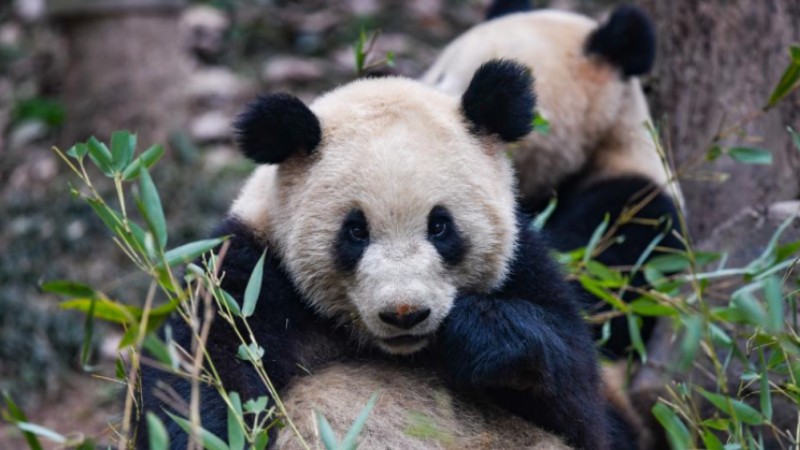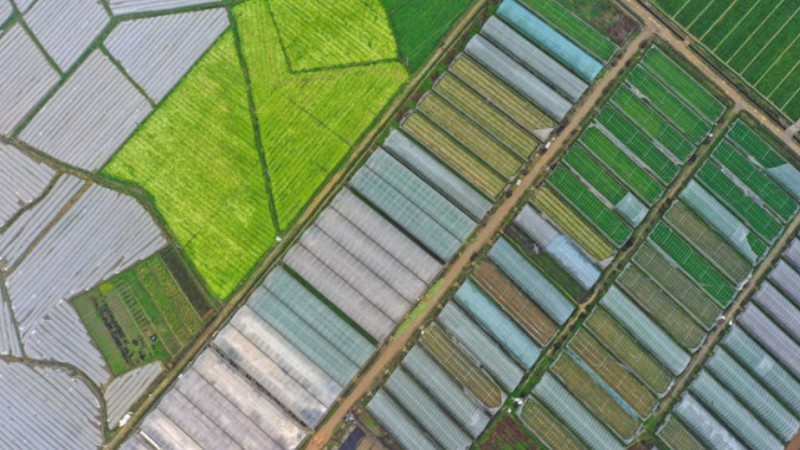China's protection of crested ibises serves as global model for saving endangered species
China has increased the number of crested ibis. The animal was once a critically endangered bird species. It has been brought back to a stable number after falling to an all-time low population of seven in 1981 to more than 9,000 today.

Crested ibises are seen at a crested ibis feralization base in Ningshan County of northwest China's Shaanxi Province, Oct. 10, 2022. (Xinhua/Shao Rui)
Moreover, the birds' habitat area has been successfully expanded from less than 5 square kilometers to 16,000 square kilometers, according to the forestry authority of northwest China's Shaanxi Province.
Crested ibises have lived on earth for more than 60 million years. They are graceful as well as demure and have been regarded as a symbol of happiness and auspiciousness in China since ancient times.
Crested ibises have been widely distributed in East Asia but were declared extinct in many countries and regions due to the overuse of pesticides and excessive and indiscriminate hunting by human beings.
Since 1978, China has conducted nationwide investigations into wild crested ibises. After nearly three years of efforts, researchers finally found seven wild crested ibises in Yaojiagou village, Yangxian county, Shaanxi Province. The seven wild birds that nested deep in the Qinling Mountains in Shaanxi were the only living crested ibises in the world at that time.
Since these birds were discovered, immediate efforts were made to protect them in an all-round way, including closing mountains for forest restoration.
During the first decade since China started the comprehensive protection of crested ibises, the population of the bird species recovered slowly, owing to the small base population and a lack of scientific measures, according to Yu Xiaoping, a professor at the College of Life Science, Shaanxi Normal University.
As China's system for crested ibises protection and technologies for artificial rearing and breeding of crested ibises as well as disease prevention and treatment improved continuously between 1991 and 2000, the number of crested ibises in the country exceeded 100 in the period, Yu said.
"Since the beginning of the 21 century, especially during the recent 10 years as a series of projects have been implemented for ecological conservation, there has been significant improvement in the biodiversity, stability, and sustainability of the ecosystems of the Qinling Mountains, and the environment of the habitats of crested ibises has been improved greatly," Yu noted.
In addition, major breakthroughs in the technologies concerning the protection, breeding, and rewilding of crested ibises have been achieved over the recent decade, which have helped increase the population of the birds to nearly 10,000, Yu added.
To relieve the pressure on Yangxian county and address problems hindering the expansion of the birds' population, including inbreeding, China has kicked off projects for the ex-situ conservation and rewilding of the birds.
Thanks to these projects, the habitats of crested ibises have extended from deep mountains to hills and plains and from Yangxian county to the whole country. Moreover, the country has also donated crested ibises to other countries in East Asia to extend the habitats of the birds further.
"So far, Shaanxi has successfully bred more than 10 generations of crested ibises, developed five populations of artificially-bred crested ibises and six populations of rewilded crested ibises. We have also built nine bases for artificial breeding of the birds outside Shaanxi," said Dang Shuangren, head of the Shaanxi provincial forestry bureau.
"By releasing crested ibises into the wild after rewilding training, we reintroduce the bird species to its old distribution areas for the establishment of self-sustaining wild populations," Dang noted.
Photos
Related Stories
- Over 64,000 migratory birds winter in north China nature reserve
- Young man spends 10 years on uninhabited islet protecting “birds of myth”
- Black-headed gulls fly to Kunming for warmer weather in winter
- Crested ibises thrive in the wild in China's Shaanxi with habitat under sound protection
- Hornbills prosper in Yunnan
- Across China: Power firm protects birds from dangers of transmission lines
- Measures taken for safety of birds and facilities in NE China
- Migrant birds seen at national nature reserve in SW China
- Birds enjoy cherry blossom in Fuzhou
- Birds forage at beach in Jahra Governorate, Kuwait
- Crested ibis population surges 1,000-fold over past four decades
Copyright © 2023 People's Daily Online. All Rights Reserved.









